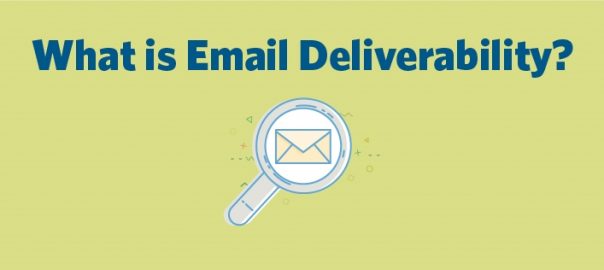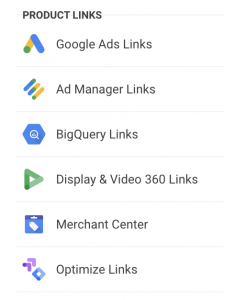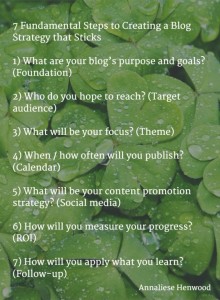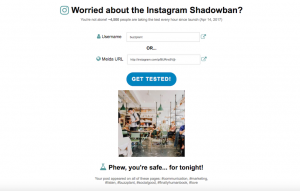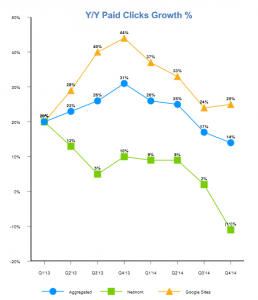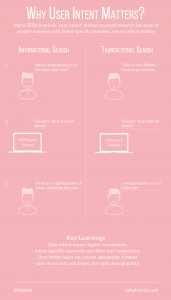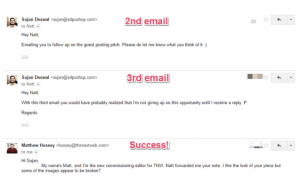— December 11, 2018
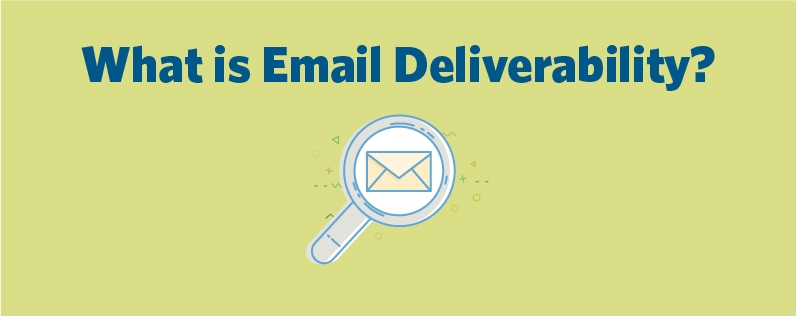
So much effort goes into crafting the perfect email for your customers.
Think of the hours spent drafting relevant content, creating attractive images, checking all your links or promo codes work, and even running multiple A/B tests to make sure your email is effective.
If you check your campaign metrics and see only 2 out of 5 people opened your email, you might ask yourself, “Did my email get marked as spam?” While it may not be true every time, this certainly is possible. This is email deliverability.
Most companies don’t think about deliverability until they have a major issue with their sender reputation—like when thousands, or in some cases millions, of emails fail to reach customers. Businesses falsely assume that an email is delivered if they don’t receive a bounce notification, but according to ReturnPath’s Email Deliverability Benchmark Report, 21% of opt-in emails never make it to the inbox.
If you’re using email marketing for your small business, you know how important it is to make sure your marketing emails find their way into your customers’ email inbox. When valuable support or transactional emails, like membership information, passwords resets, or shipping information, don’t reach your customer’s inbox, you not only stand to lose revenue, but also customer trust.
Consider this: if you have a list of one million customers and 21% of your marketing emails go undelivered, it means that 210,000 customers didn’t receive your email. The impact of this can be huge, especially if your customers expect your email. Not every person will write in to check what happened. Some might just stop doing business with you, especially if this happens repeatedly.
While the impact is unique to every brand, take a minute to ask yourself: What does losing over 21% of my mailing list mean to me?
Email Deliverability Explained
Simply put, email deliverability measures the percentage of successfully delivered emails to your customers’ inboxes. It is slightly different than email delivery rate, as the latter checks if your email has bounced, but doesn’t confirm it actually reached an inbox or junk folder. Email deliverability is a better measure of success since it checks whether your email made it all the way to a customer’s inbox or not. Emails that reach the inbox have a greater chance of being opened.
Email deliverability failures happen when your email lands up in a customer’s junk/spam folder or has been blocked by an Internet Service Provider (ISP).
There are also steps you can take to keep spam reports low and make sure your newsletters or announcements get delivered. Here are some factors that help your emails land in the right place:
1. Brand reputation
As a business owner, you know your reputation matters; what people think about your business is important. It’s the same with email deliverability. The better your sender reputation, the more emails make it to your customers’ inboxes. Your email reputation is measured by the quality of your mailing list and the extent to which you follow best email practices.
Have you received a customer’s consent before sending them emails? Are you avoiding spam words and phrases? Are you sending content that customers want and find relevant? These might seem rather basic questions but are extremely important when it comes to building a good email reputation.
One of the best ways to maintain email reputation is to keep an eye on engagement by monitoring bounce-backs, open rates, and click-throughs. Test and refine constantly. Also be sure to not send too many emails–high-volume senders often trigger a red flag with an ISP, especially when volumes are inconsistent.
These steps help you avoid getting on an ISP’s blacklist. Landing on a blacklist means you’ve been tagged as a spammer who can be blocked from sending further emails. A good email reputation helps the ISP remove your IP from their list.
2. Good infrastructure
Email deliverability infrastructure is the software and hardware used to send emails to your customers. Setting up and maintaining your own infrastructure for high-volume email marketing can be tiresome, not to mention expensive, especially for a small business.
There’s also the case of figuring out which IP address to use. Dedicated IPs can be used exclusively for drip campaigns and time-sensitive campaigns. These provide a direct connection to your ISP, who in turn delivers emails to your customers at lightning-fast speeds. Or, if you send fewer than 300,000 emails per campaign, you may opt for a Shared IP.
When you send email through Constant Contact, your emails are sent through our mail servers and therefore will be associated with our IP address. We work hard to protect our IP reputation and actively monitor accounts to prevent spam activity. We’ve also built relationships with many ISPs so we can act quickly to resolve reputation issues if they arise.
3. Sender authentication
Email authentication allows your business to take responsibility for emails you send and ensures your customer can validate that the email came your business.. Scams such as phishing and spoofing–which are based on forging the sender of an email–become much easier to detect. Authentication also provides a validated identity to which your email sending reputation data can associate. Customers can be confident that the email delivered to their inboxes is legitimate.
Once authenticated, email clients like Gmail, Yahoo and Hotmail can use the sender’s online reputation data to decide what to do with incoming mail:
- BLOCK: messages which fail authentication (fraud, phishing, scams).
- ALLOW: mail from known good senders that pass authentication.
- Spam folder: an unknown and untrusted email.
There are three main methods of authentication every business must implement:
- Sender Policy Framework (SPF Record): Authenticates who can send mail on behalf of the domain found in the return-path address (the domain found in the headers used by mail servers for bounces).
- DomainKeys Identified Mail (DKIM Authentication): Developed in part by Yahoo and seeks to validate that an email was sent by an authorized email sender, using an encryption key to automatically verify the email’s origin.
- DMARC: A policy set by the sending domain which states what type of Authentication their messages are signed with (SPF or DKIM) and tells the receiving domain what they should do with the mail (bounce, quarantine) if it does not pass authentication.
Put your best email foot forward
While all this may seem daunting, there are several tricks you can use to keep your email reputation intact and your customers happy.
1. Ask permission
We cannot stress this enough! If someone hasn’t asked to hear from you, it’s likely they won’t recognize your email in their inbox and might end up deleting your email without reading it–or worse, mark you as spam. It’s imperative you ask your customers to “opt-in” to receive emails from you.
This is called permission-based email marketing, and it’s the best route towards developing long-lasting customer relationships. When you ask permission, you’re able to build a list of people who are interested in your business and are excited to hear from you. They’re more likely to open your email, less likely to mark it as spam, and will stay with you longer than contacts who are added without consent.
2. Avoid spam traps
To minimize the possibility of your email messages being filtered out as spam, you should avoid the following:
Heavy use of spam words: Free, discount, guarantee, etc.
Writing in all capital letters: You must resist the temptation to write in ALL CAPS. When you use all capital letters, there is no differentiation between words. This makes them harder to read. It also makes your email look like spam and dramatically increases the likelihood of your email being filtered out of the inbox.
Excessive punctuation use: Using too many exclamation marks (!!!) is likely to trip email filters especially when used in conjunction with spam-like words and capital letters.
Adding too many symbols and links: Excessive use of $ $ , %, or other symbols, and including too many “click here” links tends to trigger spam filters.
3. Present yourself as a professional
Craft your subject lines carefully and always match your subject line to your email content. Never employ spam tactics like leaving the subject line blank or using ‘Re:’ so that the recipient thinks it is a reply to a previous email. Not only does this affect your email reputation, but also impacts your open rates.
Don’t forget: looks matter! You should be consistent with your email design across all campaigns you send. Your website and other marketing material look the same, so why shouldn’t your emails?
Remember, your audience is familiar with your brand identity. If you do decide to completely overhaul your design, send your customers a teaser email to let them know things are changing, and inform them when they should expect the change to happen. That way, your customers are prepared and won’t dismiss your email if they don’t recognize it.
4. Take unsubscribes seriously
GetData surveyed over 500 internet users to learn the most common reasons for unsubscribing from an email newsletter. Mostly everyone said they received too many emails, and many said the emails they’d received looked like spam.
Instead of forcing customers to receive emails from you (which they might not open and simply delete) it’s better to give them the option to opt-out. If you are a Constant Contact customer, every email you send includes an unsubscribe link. Also, make sure to monitor the inbox for the address you’re using to send your email campaigns, as many people will reply to your email and ask to be taken off your list.
Chances are you’ve been on both sides of the unsubscribe before. Don’t sweat it. If someone is bent on unsubscribing, they will. Just make sure to provide consistent value to readers and let them know the kind of content they will be receiving before they sign up.
5. Follow the laws
When sending campaigns through Constant Contact it’s very important that you abide by the rules of the CAN-SPAM and CASL legislation.
The CAN-SPAM Act stands for the Controlling the Assault of Non-Solicited Pornography and Marketing Act. While this law will not stop spam, it does make most spam illegal and ultimately less attractive to ISPs. The law is specific about the requirements for sending commercial email and empowers the federal government to enforce the law.
CASL is short for the Canadian Anti-Spam Legislation that went into effect on July 1, 2014. CASL intends to protect electronic commerce in Canada by deterring damaging or deceptive forms of spam, such as identity theft, phishing, and spyware.
In addition to CASL, you now need to make sure your business follows the regulations of the General Data Protection Regulation (GDPR), whether you’re a business within the European Union (EU), or simply have clients in the EU.
The Constant Contact Privacy Statement explains what we collect and how we handle your personal data. This statement includes many examples of how personal data may be used by Constant Contact. We suggest that you take the time to understand how this applies to you.
Maximize and improve email deliverability rates
The secrets to email deliverability are simple: Keep a clean subscriber list and don’t send spam. As a Constant Contact customer, you are more likely to be compliant with CAN-SPAM, CASL and GDPR legislation at the start. However, the ultimate responsibility is on your business. Make sure you:
- Send emails and write engaging content your customers want to receive and read
- Remove incorrect email addresses from your contact list, especially if a message bounces
- Use our products and tools correctly
We’re here to help you stay in-the-know on best practices, reduce bounces, and get your emails opened. Take the time to learn how to increase your email deliverability—and improve your marketing.
Digital & Social Articles on Business 2 Community
(52)
